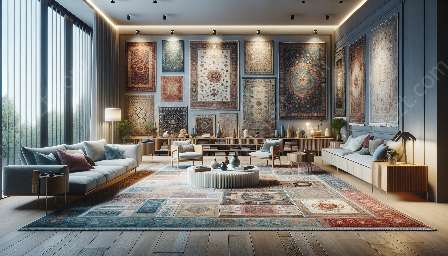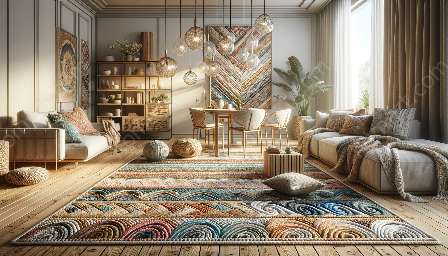Rugs have played a significant role in the history of human civilization, evolving from ancient origins to become an indispensable element of home furnishings today. The journey of rugs encompasses a rich tapestry of culture, craftsmanship, and artistry, reflecting the diverse traditions and influences of different societies.
Ancient Origins and Early Development
The history of rugs can be traced back thousands of years to ancient civilizations such as Egypt, Mesopotamia, and China. These early rugs were crafted using traditional techniques, and their designs often depicted scenes from daily life, religious motifs, or symbols of status and power.
The art of rug weaving spread across different regions, giving rise to distinctive styles and patterns. Persian rugs, for example, became renowned for their intricate designs, vibrant colors, and exquisite craftsmanship, setting a standard for quality and artistry that continues to inspire rug makers to this day.
The Renaissance of European Rugs
During the Renaissance period in Europe, the demand for luxurious textiles, including rugs, surged among the aristocracy and merchant class. This led to the creation of magnificent tapestries and carpets that adorned palaces and grand estates, showcasing the wealth and sophistication of their owners.
European rug-making centers, such as France and Belgium, quickly gained prominence for their intricate weaves and opulent designs. The fusion of Eastern and Western influences during this time gave rise to unique styles that continue to be celebrated in the world of home furnishings.
The Influence of Oriental Rugs
Oriental rugs, originating from regions such as Persia, Turkey, and India, captured the imagination of collectors and connoisseurs around the world. These exquisite rugs were prized for their exceptional quality, intricate patterns, and cultural significance, leading to a global fascination with Oriental rug artistry.
The allure of Oriental rugs extended beyond their aesthetic appeal; they became symbols of wealth, prestige, and craftsmanship. Their timeless elegance and enduring popularity have made them a sought-after addition to home furnishings, infusing interiors with a sense of history and refinement.
Modern Innovations and Contemporary Designs
In the modern era, the art of rug-making has continued to evolve, embracing new materials, technologies, and design concepts. Contemporary rug designers draw inspiration from diverse sources, fusing traditional motifs with innovative twists to create rugs that appeal to contemporary tastes and lifestyles.
Rugs have also become more accessible to a wider audience, with a diverse range of styles, sizes, and price points available to suit various home furnishing needs. Whether seeking a statement piece for a living room or a cozy rug for a bedroom, today's consumers can choose from an array of designs that reflect their personal aesthetic and functional requirements.
Preserving Tradition and Heritage
Amidst the evolution of rug-making, there remains a strong emphasis on preserving traditional techniques and honoring the cultural heritage associated with rug craftsmanship. Artisanal rug weavers and workshops continue to uphold age-old methods, ensuring that the artistry and cultural significance of rugs are passed down through generations.
By supporting the craftsmanship of skilled artisans and investing in high-quality, ethically sourced rugs, consumers can contribute to the preservation of this timeless tradition while enriching their homes with beautifully crafted furnishings that embody history and craftsmanship.
































